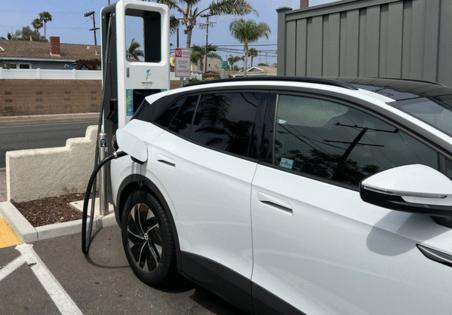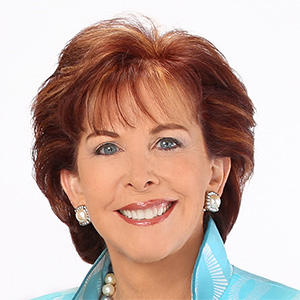Q&A: Can high-demand California and the rest of the US install enough EV chargers by 2030?
Published in Business News
SAN JOSE, Calif. — If America is going to switch to electric vehicles, it’s going to need a lot more charging stations along highways and in shopping malls, parking structures and apartment buildings.
To stem climate change, the Biden administration wants half of all new-vehicle sales to be EVs by 2030. California is pushing for 100% zero-emission vehicle sales by 2035.
To meet those goals, the nation will need almost 2.3 million public chargers by 2030, the federally funded National Renewable Energy Laboratory estimated in March. California energy officials projected that the Golden State will need just over 1 million public chargers by 2030.
That means the nation will require a 12-fold increase in EV chargers over the next five years — equivalent to installing 440,000 chargers a year.
Many of those must be the more costly “Level 3,” or fast chargers, which can get an EV to 80% of its capacity within an hour. The “Level 2” charger takes from four to 10 hours to get to 80% capacity.
Meeting those goals is going to be challenging, experts say.
Some older buildings will need more power. Commercial real estate owners are grappling with who will take on the risk and expense of installing chargers. Back orders for equipment are a year or more, while getting building permits and local approvals could delay installations even further.
“When we look at those older buildings, they’re not going to have enough power in most cases,” said Jim Hurless, global real estate leader for EV infrastructure at the commercial real estate brokerage CBRE. “It could be costly.”
We spoke to Hurless about the challenges ahead for meeting the nation’s EV charging goals. His comments have been edited for space.
Q: There are about 145,000 gas stations in the U.S., or around 1.7 million pumps at 12 pumps per station. Why do we need 2.3 million publicly accessible charging stations?
A: It’s a great question. A lot of it is about accessibility and how people are using our charging infrastructure.
We don’t put gas pumps in people’s homes or in apartment complexes. But as we start to move forward with electric vehicles, almost 80% of EV drivers are actually charging at home primarily.
So, when we take a look at that 2.1 million Level 2 chargers, it breaks down into 590,000 for apartments and 470,000 for workplace — for office buildings, healthcare, hospitals and medical office buildings. The balance of the 2.1 million chargers are going to be spread across other commercial types of locations, like hotels, across shopping centers and other commercial property types.
Q: Is demand as great for chargers in apartments?
A: The multifamily sector, apartment buildings, is the fastest-growing asset class for EV charging deployment. It’s a very big space, and it’s about delivering equity. We can put charging into low-income (areas), making charging more equitable and available for all socio-economic classes.
Q: So, are we seeing chargers installed mainly in new construction, or are there retrofits?
A: Both.
In the state of California, as an example, any new development has to have EV charging incorporated into the construction. The guideline is 10% of the parking stalls need to (have EV chargers), but different municipalities can make that a larger number.
(Editor's note: Effective July 1, the standard changed to 40% for new hotels, motels and multifamily buildings, according to Gary Welch of CalGreen Energy Services.)
Q: A lot of apartment buildings are really old. What are the challenges for retrofitting these older buildings?
A: It’s a case-by-case basis. We have to look at the structural engineering of those buildings. A couple of constraints we have when we look at apartment buildings is how much utility service or energy is being delivered to that building. That’s going to be a key question for us. Can we add more service to that building? … It could be costly.
Q: Are chargers a necessity at apartments or a luxury item?
A: In my conversations with multifamily developers, when a potential tenant calls an apartment complex, one of the top three questions that are oftentimes asked … is, Do you have EV charging? If the answer is no to either one of them, they’re likely to get hung up on or be cut from consideration. I’ve heard a stat from one of our developers that they’re seeing a 40-47% hang-up rate if they do not have chargers.
Q: I’ve heard you say that another problem for commercial landlords is determining whether to install chargers themselves or hire a contractor to install and maintain them. Who handles the risk and the cost of installation?
A: Based on my experience, these commercial real estate owners and operators, they realize what they do best. And that is not owning an operating and maintaining their own charging infrastructure. So, they are absolutely looking for ways … to understand what the ownership structure can look like.
There are three basic models. One is that third-party charging operator comes in and takes on all the risk, provides all of the capital to install the charging infrastructure, and there’s no monthly fees. In those situations, those property owners can look for about a 10% of a net revenue fee share back to them.
The second model is a monthly subscription, where the landlord will pay a set dollar amount per plug per month. And in exchange, they’ll get up to 80% of that revenue as a share.
The third option is they could go out and buy their own infrastructure, install that, and they’re responsible for maintaining it. They’ve got all the risks, and if those chargers don’t get used, then they don’t have a return on their investment.
Q: If I’m driving across the country, I will want DC fast chargers, right?
A: That’s correct.
Those are called hubs. Think of it as the convenience store of the future, where we’re building out networks of EV chargers — 10, 15, 20 DC fast chargers — right off of a travel corridor.
That’s really what the (federal) infrastructure bill was set up to fund, (providing $7.5 billion for) the build out of the fast-charging networks across these travel corridors, to eliminate range anxiety, to have a better charging experience. They’re going to try to set those up right off of those exits and those interstates.
Q: Tesla has a different kind of charger. So, if I get a Volkswagen ID.4, a Lucid Air or a Hyundai Ioniq, can I use those Tesla chargers?
A: Yes. The North American Charging System (or NACS) is the plug configuration for Tesla. (But) more and more of the auto manufacturers are starting to adapt that charging standard so that they can use Tesla charging stations. And Tesla has committed to opening up its charging stations to other manufacturers.
________
©#YR@ MediaNews Group, Inc. Visit at mercurynews.com. Distributed by Tribune Content Agency, LLC.












Comments